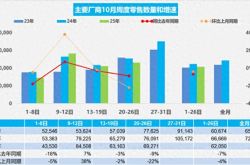Home Appliance Market Kicks Off Amid Turbulence: Manufacturers Navigate Strategically
![]() 03/03 2025
03/03 2025
![]() 518
518

Turbulence in the frontline market is nothing new for home appliance manufacturers. However, this year, amidst ongoing market tumult, stability in operations and strategies is paramount. Once a direction is set, manufacturers must stay the course, avoiding unnecessary changes that could lead to "picking up sesame seeds and dropping watermelons" – prioritizing minor gains over significant opportunities.
By Ning Yan
The battle for the home appliance market, which began in February, is poised to intensify in early March. Many companies and merchants are already preparing for a "double-barreled" attack, targeting both channel merchants and household users.
Yet, despite the shared market, attitudes and strategies among firms vary, making the situation and competition delicate. The grading and differentiation among enterprises are particularly acute.
According to industry sources, as February draws to a close, some manufacturers are still undecided on their operating methods and strategies. Whether to continue with low prices or adopt a new approach remains under evaluation, with alternative paths still possible. Simultaneously, the home appliance "national subsidy" policy's implementation and explosion are reshaping the main market and consumption patterns. Besides competing for "national subsidy" products and markets, there's a notable expansion and activation of "non-national subsidy" markets.
Currently, confirmed marketing actions fall into two main categories: one focuses on product, channel, and market competition under the "national subsidy" policy. The price war among major manufacturers will transition into a marketing service war, with user-targeted price reductions becoming more subtle. More enterprises and merchants need to integrate resources like "warehousing, logistics, installation," and strengthen terminal marketing service capabilities to swiftly convert traffic into sales. Those unable to find traffic or sales will struggle.
The other category focuses on product, channel, and market operations outside the "non-national subsidy" policy, with a key emphasis on price reshuffles among large and medium-sized enterprises. The core is that "large enterprises and merchants, with big brands, cost-effective products, and competitive prices, are accelerating their market share encroachment on many small and medium-sized manufacturers." Many small, medium, and micro enterprises face the dilemma of merchants and channels not initiating market engagement. Many cooperating merchants choose to "lie flat" – doing nothing and waiting for improvements.
The industry believes this situation is straightforward: The "national subsidy" policy acts as a threshold, excluding some manufacturers due to strength and taxation issues. Additionally, subsidies guide consumers towards high-quality, mid-to-high-end products from large enterprises and big brands. With a relatively fixed market size, large enterprises and merchants must squeeze out and eliminate small and medium-sized enterprises to grow.
Currently, most small and medium-sized enterprises in the home appliance market fear that large and medium-sized enterprises, having already seized market share through the "national subsidy" policy, will fiercely compete for more market share through a new round of "brand, price, marketing," and other systematic reshuffles. It won't be as simple as price reductions and promotions but will involve strategies like "improving channel coverage, competitive pricing, product differentiation, and reliable quality and branding" to continuously snatch orders and engage in internal competition.
So, in the 2025 market competition that has begun, what should home appliance manufacturers prioritize? More brutal price wars, intense market reshuffles, or new policies and industry events causing disruptions? In the industry's view, it's the alignment of manufacturers' business strategies, goals, methods, and directions in implementation, practice, and execution. Anxiety, tension, fear, and lying flat should be avoided.
First, the most crucial task is for all manufacturers to re-evaluate the market, competition, and landscape changes, determining their target markets, customers, and expansion opportunities. They must know their capability boundaries, understand market space and opportunities, insight into user needs, and align enterprise capabilities, market competition, and user needs.
Despite the adage that "the only constant in the market is change," manufacturers must not be swayed by external market changes or peer strategies, impacting their own. Market conditions are secondary; what matters is the enterprise's approach, layout, and means, as well as goal-focused execution. Manufacturers must be clear about this to avoid anxiety, confusion, and lying flat.
Second, the most urgent task is for manufacturers to "play to their strengths and avoid their weaknesses," finding their niche and racetrack. The vast Chinese home appliance market offers opportunities for manufacturers of different sizes and strengths due to regional differences and demands. Whether aiming to grow big or small, capable and thoughtful manufacturers can find their path to survival and possess their "own piece of the sky," regardless of peer and market changes.
In recent years, many manufacturers have "talked more than done," with verbal skills surpassing practical abilities. This has hindered their ability to establish territories and systematic competitiveness. Faced with the same market, some see difficulties and challenges, others see opportunities and spaces. Some cut expenses, while others increase investments against the trend.
In the industry's view, market turmoil, changes, and uncertainties stem not only from external market, economic, and policy environments but also from internal corporate mindsets, merchant states, and user preferences and abilities. Changes have permeated the market for the past two to three years. Smart manufacturers find opportunities amidst these changes, while others complain, criticize, and helplessly lie flat.
Manufacturers must prioritize execution efficiency, promote execution sustainability, and ensure execution determination!
Declaration: Original article by the home appliance industry, strictly prohibited from reprinting without authorization








